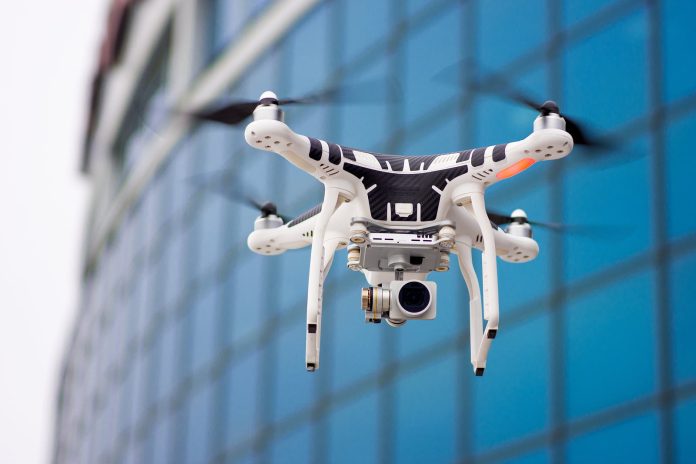We hear a lot about the negative aspects of drone spying but wouldn’t you say professional video surveillance is the killer app when it comes to drone use? What sort of drone would you recommend for security operations on a typical large site? And bigger drones or smaller?
Drones could be extremely useful for security operations but you need to make sure you are clear about what you want drone operators to be able to see and when. Depending on the nature of your business, this will be easier or more difficult – a people-based business like a university will be tougher to ratify than a mine, for instance.
Drones are a science of their own but there are some fundamentals worth bearing in mind. Buy a drone with a 4K camera. Look for a unit that can handle backlight and low light. Buy a smaller drone if you value discreteness and a larger drone with a longer flying time and greater stability as a serious camera platform. We would rather fly a larger drone and camouflage the underside than buy a smaller drone that’s less able to handle cross wind, though camo may make the drone harder for operators to see when aloft. The more flight time, the better, everything else being equal. Typical flight times are around 30 minutes and recharge times are about an hour and 15 minutes, though a drone can come back to base for a replacement battery and head back into the field in a couple of minutes.
You want automated flight capabilities, especially auto return and landing, and collision avoidance technology, as well as a controller with a dedicated screen bright enough to be seen in full sun. Noise is a consideration. Even quite small drones can be loud and you need to get them up to about 30m in height before their rotor buzz merges with the ambient noise floor – the bigger the drone, the higher they’ll need to be for noise to blend into the background. Comms is an issue. Think about whether you’ll be streaming footage directly to a smart device in real time, streaming to a remote monitor or storing footage onboard for later retrieval, or all the above. Control range is another consideration – most drones offer long range operation – between 5-7km – which is plenty for most applications.
You will need to think about management of drone footage. We’ve not heard of drones being automated and integrated into video surveillance systems but VMS solutions like Genetec Security Center do support them. Will drone footage be viewed in real time at the video wall, or will video be uploaded after an event? Flight operations are a consideration, too. The drone pilot can’t be located in a dungeon under the floor the way most security control rooms are – pilots will need to be able to see the drone taking off and landing from a relatively open and completely stable drone pad, preferably offering controlled access.
A key aspect of operations might be choosing to deploy FPV goggles with head tracking. A typical FPV headset will give the operator a pair of 85-degree 2K displays and head tilt flight controls, making flying the drone highly intuitive. The cost of a good consumer drone (say, a DJI Phantom 4 Advanced and a headset) would be around $A3000, which is a lot of surveillance for not much money. There are a number of professional surveillance drones available from high end manufacturers which incorporate additional capabilities with a commensurate price tag. You could ignore consumer drones and go full pro but it's worth considering CCTV people successfully leverage low cost CCTV cameras with no hesitation.
One of the nice things about drones is their ability to take off and whizz over to predetermined waypoints and hover discretely over a key location or incident at a height of 50m. This allows them to provide very high-quality imagery to operators in real time and to investigators later on. They can also check on alarm events like water leaks or fire alarms, as well as flying along a boundary to keep an eye out for fires, or monitor a growing fire situation.
Drones have varying speeds – some are much faster than others but most will do 40mph plus, which is plenty when you are going as the crow flies, even on a quite large site. Outright flight performance vectors are less important than camera quality and platform stability when you are talking security applications. You don’t need security operators to be playing Red Bull around the condensing towers of your power station. But giving them the ability to put eyes on or across the perimeter of a large and/or remote site without the need for the huge expense of dozens of fixed cameras is a serious advantage.
This said, you must be sure you need this sort of flexible surveillance. And if you do, you’ll probably need to implement procedures governing the way drones are flown on your site – the routes they can take, the speeds they can travel, the areas in which they can record footage. This is likely to require the input of people on the site – uni academics and students will be less keen on the idea of surveillance drones than workers with a singular job to do.
There are also CASA remote piloted aircraft rules relating to the use of drones around the public, no night flying, relatively low ceiling heights in major cities and no-go zones around key sites and pieces of vital infrastructure. But for larger commercial and industrial sites, many of these issues are immaterial and the comparatively low cost and high value of drones used for spot surveillance makes them a no-brainer. ♦








